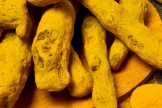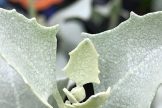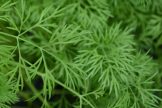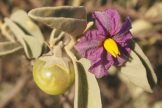
Wattle seed has the “Aroma of toasted coffee grounds, sweet spice, raisin and chocolate” according to new research conducted by the Rural Industries Research and Development Corporation. It can be used to make cakes or damper, used as a flavouring in ice-cream, or as a coffee substitute. It is now being made into a delicious essence too which can be used instead of vanilla essence.
Acacia species
Indigenous Australians used almost all parts of these plants. Seed and seed pods were eaten for their high protein content, the gum was also eaten and added to drinks, while the bark was used as medication and toxic species were used to stun fish so they were easier to catch. Early settlers used the bark to tan animal hides.
There are many species of Acacia that are palatable and not toxic, but the one generally grown commercially for seed is A.victoriae. This is either a short lived shrub or a small tree from 2-9m. This species is not generally available in nurseries in Melbourne, possibly because it’s usually found in the drier interior of the continent. It’s found in all other mainland states in the drier parts.
An alternative species, and one that is usually available is A. sophorae which is a coastal wattle. It does have weedy tendencies however so should be planted with caution near bushland.
The local species; A.mearnsii, A.dealbata, and A.pycnantha were all used for their gum and bark by the aborigines. These are readily available in nurseries, although the first two species are generally fast growing but short lived – approximately 15 years.
Cultivation
Growing a local species makes good horticultural sense as it will do best with the local conditions. The ground would not have to be treated in a special way, although the plant will probably grow faster if the soil is loosened with some organic matter. Plant in the cooler months of the year.
A.victoriae is tolerant of clay soils and frost but will die in drought. So, a little water in the middle of summer would be advantageous. Plant in an open sunny position. Seed is harvested in summer.
A.sophorae planted in a sheltered spot will be a shrub of 2-3m. It is tolerant of a wide range of soil types as long as it is not waterlogged. If heavy, waterlogged soil is a problem, mound the soil up and add plenty of organic matter. Plant in full sun to part shade. It is tolerant of light frosts.
Preparing for use in the kitchen
Seed of A.victoriae will fall off the tree in a wind. Placing a tarp beneath the tree and then tapping the branches should be enough to collect the pods. The seed is removed from the pods and then roasted and ground before being used as a flour or a flavouring.
Lots of wattle seed is unpalatable if you happen to be foraging in the bush. It is generally best to roast all wattle seed before eating as this should destroy the toxins. I personally would not be eating wattle seed from species I couldn’t recognise though.
Indigenous Australians collected gum, sometimes notching tree trunks in autumn to encourage a good flow. They would eat the gum or dissolve it in water with flower nectar to make a sweet drink.





